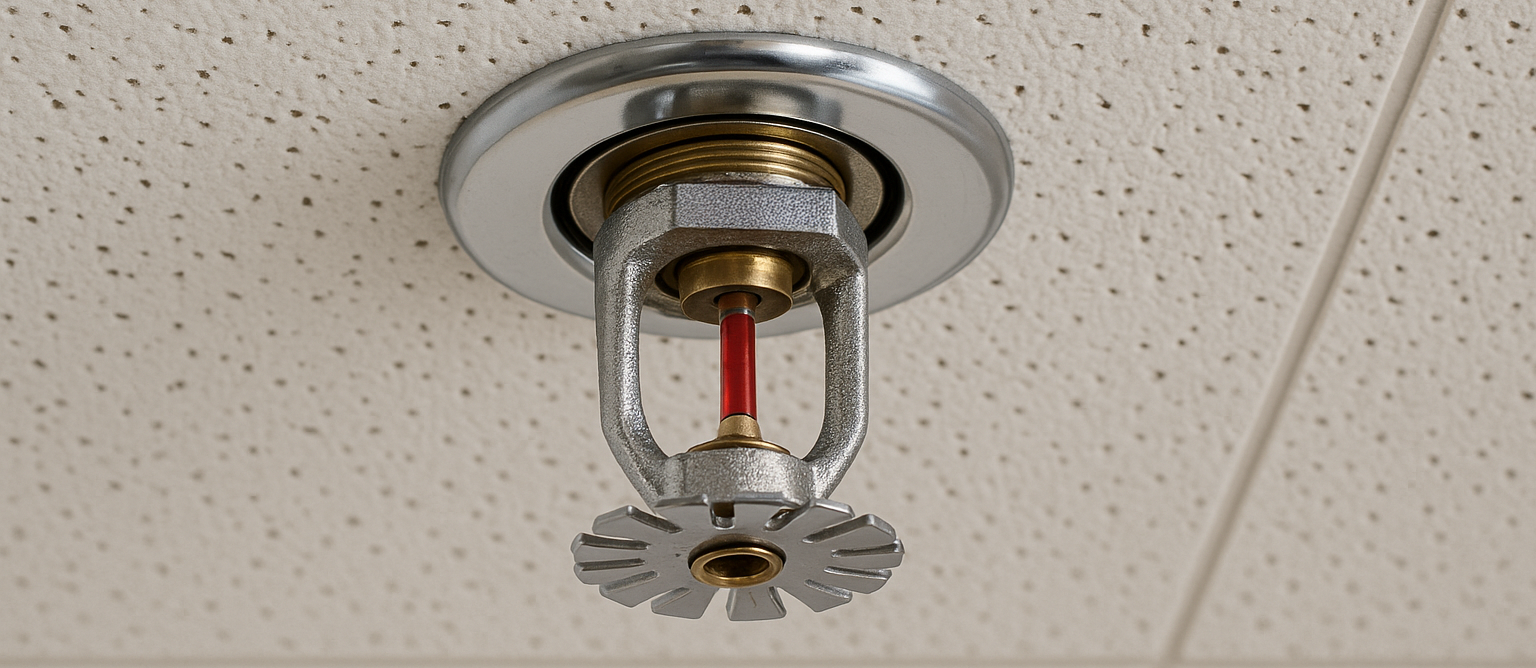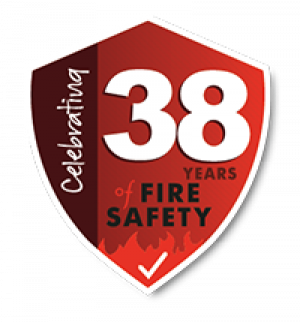From Humble Beginnings to High-Tech: The Evolution of the Fire Sprinkler
27th Aug 2025

Introduction to Fire Sprinkler Systems
Fire sprinkler systems are an essential component in modern fire safety, designed to automatically suppress fires and reduce potential damage. They serve a critical role by detecting heat and delivering water to control and extinguish flames at an early stage. Historically, the concept of sprinkler systems can be traced back to rudimentary methods using gravity and manual valves. These early ideas laid the groundwork for the sophisticated, automated systems that are integral to today's fire safety strategies.
This article explores the evolution of fire sprinklers from the rudimentary, manual water distributors of the 15th to 17th centuries to the modern, smart solutions integrated with IoT sensors. Read more to discover the journey fire sprinkler systems have taken, from the explosive sprinkler to the modern innovations we know today.
Early Inventions and Experimental Designs
During the 15th to 17th centuries, European buildings featured gravity-fed water cisterns installed in attics. These cisterns were linked to manually operated valves that could flood an area in the event of a fire, representing one of the earliest approaches to fire suppression. Although crude, this method marked an innovative attempt at reducing fire damage using available resources. The reliance on manually triggered systems underscored the early stages of fire safety technology.
However, these early designs had significant limitations and inherent risks. The absence of automation meant that proper operation was dependent on human intervention, often resulting in delayed or insufficient action. The manual systems could not guarantee a timely response to rapidly developing fires, thereby compromising their effectiveness. Such challenges highlighted the urgent need for more reliable, automated solutions to improve fire response efficacy.
The drive for improved safety measures eventually led to the development of the first automated fire sprinkler concept in the early 18th century. Ambrose Godfrey, working in London in the 1720s, patented an "explosive sprinkler" that used a large cask of fire-extinguishing fluid alongside a pewter chamber of gunpowder. When a fuse ignited the gunpowder, it triggered the dispersion of the fluid to combat the fire, albeit in a risky manner. Despite its dangers, Godfreys ingenious design set a precedent for later automated fire suppression systems.
Pioneering Engineering Breakthroughs
The industrial revolution, marked by a surge in factory fires, spurred significant advancements in fire safety technology. In 1812, William Congreve installed a system of perforated pipes at the Drury Lane Theatre in London, which was a pioneering step in utilising water distribution to tackle fire outbreaks. Although these systems required manual operation via opened valves, they demonstrated the potential of engineered solutions to manage fire risks. This early integration of piping systems was critical in evolving fire suppression approaches during a period of rapid industrial growth.
Following this, further refinements were made by successors of Congreve, improving both the layout and reliability of the systems. In 1872, the American inventor Philip W. Pratt was granted the first U.S. patent for an automatic sprinkler that used a valve held shut by a weight, which was released by a fusible link when exposed to heat. This breakthrough minimised the need for human intervention and allowed for quicker responses to fires. The innovations developed during this period marked the transition towards more effective and autonomous fire suppression technologies.
In 1874, Henry S. Parmelee offered another major leap forward by designing the first commercially successful automatic sprinkler head. His system featured individual, temperature-sensitive sprinkler heads that activated independently when exposed to high heat, thanks to a contained glass bulb that shattered at a specific temperature. This design not only enhanced targeted water delivery but also improved overall system efficiency in controlling fires. Parmelee’s breakthrough paved the way for the highly responsive, modern sprinkler systems now in use.
Advancements in Materials and Technology
Early sprinkler systems were constructed using robust materials such as brass, bronze, and steel, which ensured durability under extreme conditions. These materials provided the necessary strength and reliability to support water distribution systems during fire emergencies. The use of these metals laid a strong foundation for the development of more complex and dependable fire suppression mechanisms. Their resilience contributed significantly to the early successes in mitigating fire damage.
Subsequent innovations introduced components like glass bulbs and fusible metal links, which allowed for more precise control of activation temperatures. These improvements marked a shift from simple mechanical triggers to more refined, responsive systems capable of smarter operation. The integration of these elements was instrumental in progressing towards systems that could operate with higher accuracy and reliability. This move advanced fire safety from a basic function to a sophisticated interplay of materials and engineering techniques.
Modern sprinkler systems benefit from state-of-the-art materials including CPVC, PEX plastics, and corrosion-resistant alloys such as stainless steel and innovative brass blends. The incorporation of IoT sensors and networked controls ensures remote monitoring and real-time responsiveness, further enhancing operational efficiency. These contemporary materials not only extend the lifespan of sprinkler systems but also reduce maintenance needs and the risk of corrosion. The evolution of materials has been a key driver in the transformation of fire safety technology, providing robust, efficient, and intelligent solutions.
Impact on Fire Safety Regulations and Risk Management
The advancements in sprinkler technology have been integral in shaping modern fire safety regulations. Early innovations spurred the development of stringent standards, such as those established by the National Fire Protection Association (NFPA), with NFPA 13 first published in 1896. The codification of design and installation protocols helped ensure that sprinkler systems deliver reliable performance during emergencies. These legislative frameworks have played a critical role in standardising fire protection measures across the globe.
Modern sprinkler systems contribute significantly to effective risk management and regulatory compliance in a variety of settings. Their precise and rapid response capabilities reduce the extent of fire damage and ultimately enhance building safety. Robust systems provide reassurance to building owners and managers that essential fire suppression measures are consistently met. Through ongoing innovation, these systems continue to address contemporary fire risks while supporting adherence to ever-evolving safety standards.
Modern Sprinkler Systems and Their Innovations
Contemporary fire sprinkler systems are characterised by advanced components including smart sensors and network connectivity, which enable immediate responses to fire outbreaks. They are designed to rapidly detect increases in temperature and trigger water discharge with exceptional precision. The integration of digital control systems with real-time monitoring capabilities has revolutionised the operational efficiency of these systems. Modern sprinkler technology is a testament to how far fire safety engineering has progressed, ensuring both reliability and timely intervention.
Specialised sprinkler designs have been developed to address unique fire risks in various environments. Notable innovations include Early Suppression, Fast Response (ESFR) systems, Control Mode Specific Application (CMSA) designs, and sidewall sprinklers which are tailored for challenging applications such as storage facilities and hotel corridors. These specialised systems provide optimal water distribution patterns and targeted protection where conventional sprinklers might fall short. They exemplify the convergence of focused design and comprehensive risk management strategies in fire safety.
Environmental considerations now also play a significant role in the design of modern sprinkler systems. Innovations such as water mist systems offer very fine sprays that can suppress fires while minimising water damage, making them suitable for sensitive environments like museums and heritage sites. Additionally, advancements have focused on reducing water usage and incorporating recyclable components to lower the environmental footprint. Through these eco-friendly designs, modern fire safety solutions continue to evolve, balancing performance with sustainability.
Conclusion: The Evolution of Fire Safety
In summary, the history of fire sprinklers reflects a continuous journey of innovation from early manual systems to sophisticated automated networks. The initial designs, ranging from gravity-fed cisterns to Ambrose Godfreys explosive sprinkler, paved the way for more effective solutions. Key milestones, such as William Congreves 1812 installation, Philip W. Pratts 1872 automatic sprinkler, and Henry S. Parmelee’s breakthrough in 1874, have been instrumental in shaping modern fire safety regimes. The evolution of these systems underlines the commitment to advancing technology in the safeguarding of lives and property.
Modern fire sprinkler systems embody the integration of cutting-edge materials, smart technology, and environmental sustainability. They play a pivotal role in risk management and compliance, ensuring that fire safety measures are both efficient and reliable. As fire safety regulations continue to develop, the role of innovative sprinkler systems becomes increasingly vital. The remarkable progress documented in this history is a testament to the enduring value of continuous innovation in protecting communities and assets.

